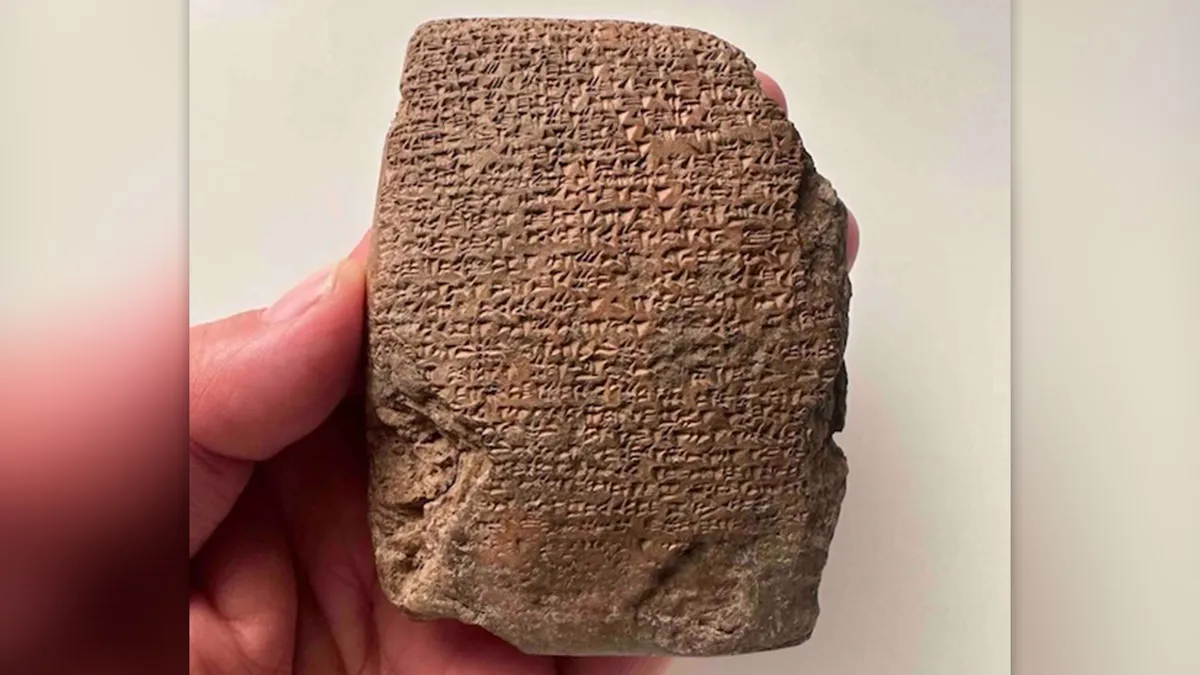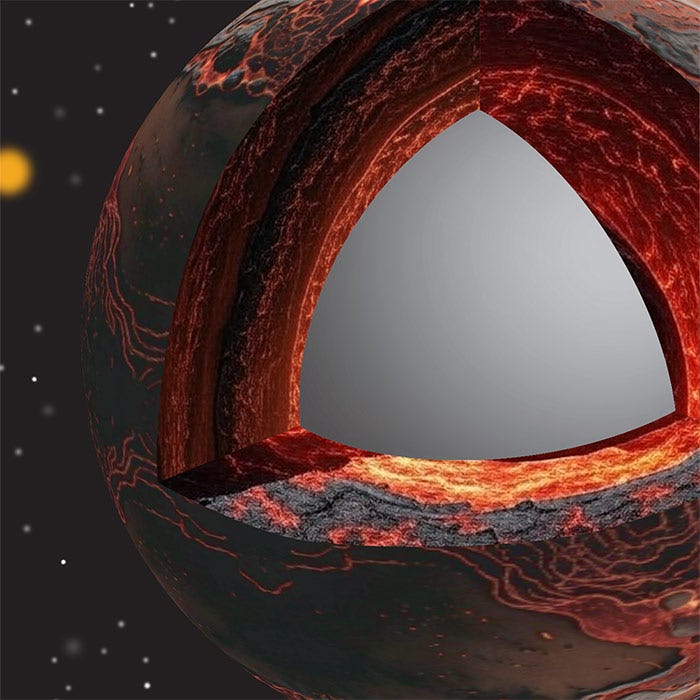3,300-year-old tablet discovered describing the catastrophic invasion of four cities
The tablet is inscribed with cuneiform text and describes the outbreak of war, and the Hurrian inscription is a prayer for victory.

The ancient tablet is inscribed with cuneiform text in both the Hittite and Hurrian languages. The Hittite inscription describes the outbreak of war, and the Hurrian inscription is a prayer for victory. (CREDIT: Kimiyoshi Matsumura, Japanese Institute of Anatolian Archaeology)
A 3,300-year-old clay tablet has been discovered by archaeologists in Büklükale, approximately 100 km from Turkey’s capital, Ankara. The tablet unveils a scene of a catastrophic foreign invasion during a period of civil unrest within the Hittite Empire, suggesting an effort to support one of the warring factions.
Previously, excavations in Büklükale had yielded fragmented clay tablets, but this find stands out due to its near-perfect condition. Büklükale, based on the analysis of pottery shards, is believed to have been a city of the Hittite Empire Period with a diameter of 500 meters.
The palm-sized tablet, found in May 2023 by archaeologist Kimiyoshi Matsumura from the Japanese Institute of Anatolian Archaeology, is significant. Matsumura explained to Live Science that the Hittites utilized the Hurrian language for religious ceremonies, and the tablet likely documents a sacred ritual performed by the Hittite king.
Büklükale site consists of two archeological areas, namely “Lower City” and “Upper City”. (CREDIT: İHA)
Matsumura elaborated, "The find of the Hurrian tablet means that the religious ritual at Büklükale was performed by the Hittite king. It indicates that, at the least, the Hittite king came to Büklükale … and performed the ritual."
The tablet, with cuneiform text, holds vital insights. Mark Weeden, an associate professor at University College London, translated it.
The first six lines, in Hittite, depict the dire state of four cities, including the capital Hattusa, while the subsequent 64 lines, in Hurrian, comprise a prayer for victory.
Related Stories
Hurrian, an extinct language, was spoken from the late third millennium BCE until the final years of the Hittite Empire. It originated in the Mitanni kingdom, later assimilated into the Hittite dominion.
Despite its obscurity, experts, including Matsumura, have decoded parts of the inscription. The prayer is addressed to Teššob, the storm god, beseeching divine guidance amidst conflicts and mentioning adversarial kings.
The demise of the Hittite Empire, around the early 12th century BCE, resulted from various factors: internal strife, environmental shifts, and external invasions by groups like the Sea Peoples, Kaskis, Phrygians, and Mycenaean Greeks.
The tablet was found on the north side of the Hittite ruins at Büklükale. The sacred Hurrian written on the tablet suggests this was the site of a royal residence or temple. (CREDIT: Kimiyoshi Matsumura, Japanese Institute of Anatolian Archaeology)
However, the invasion documented in the tablet predates this collapse by approximately 200 years, occurring during the reign of Hittite king Tudhaliya II, circa 1380–1370 BCE.
Matsumura clarified that the tablet pertains to a period of internal strife, distinct from the eventual downfall of the Hittite Empire.
Archaeologists think Büklükale in central Turkey, about 37 miles (60 kilometers) southeast of the modern city of Ankara, was a major city of the Hittite Empire more than 3,000 years ago. (CREDIT: Kimiyoshi Matsumura, Japanese Institute of Anatolian Archaeology)
He stated, "During this time, the Hittite heartland was invaded from many different directions at once … and many cities were temporarily destroyed."
While the Hittite Civil War is recognized as a destabilizing period in the empire's final decades, its roots extend into earlier times.
For more science stories check out our New Discoveries section at The Brighter Side of News.
Note: Materials provided above by the The Brighter Side of News. Content may be edited for style and length.
Like these kind of feel good stories? Get the Brighter Side of News' newsletter.



